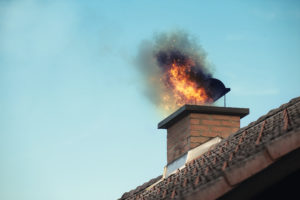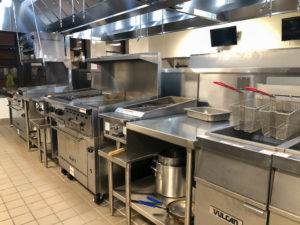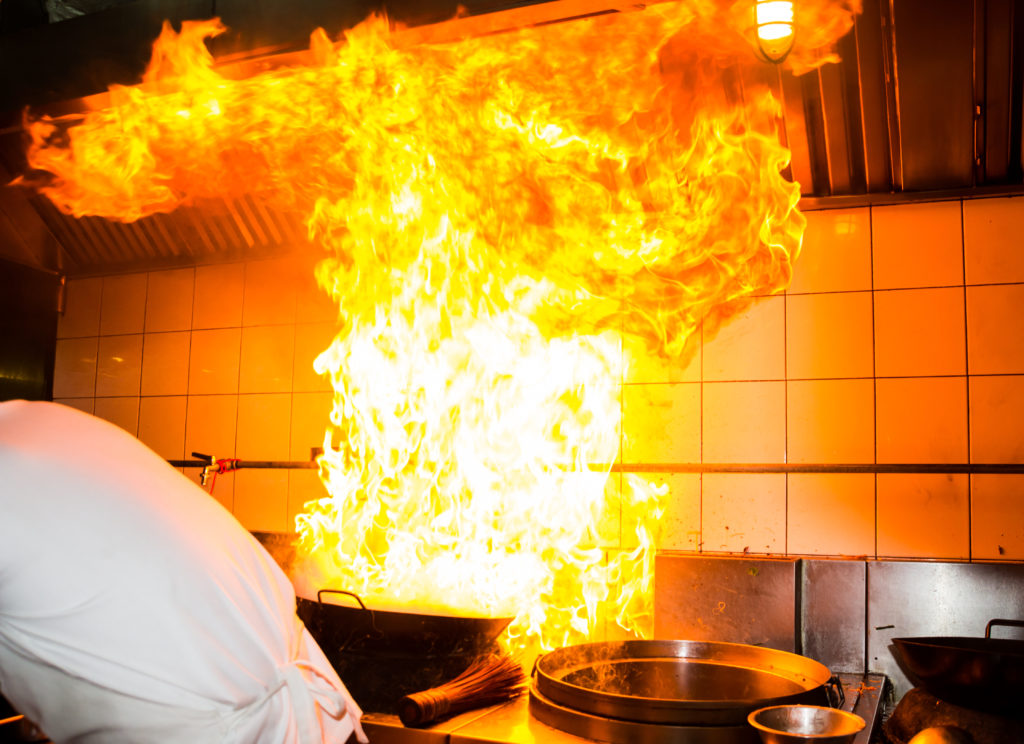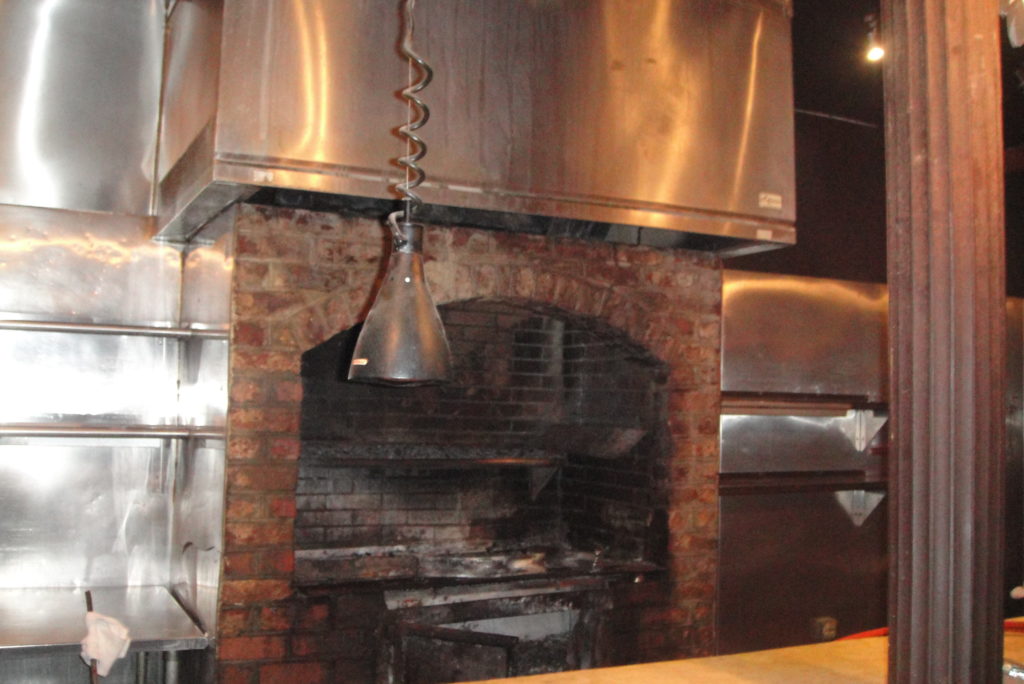Eating and drinking establishments see an average of 7,410 structure fires per year based on a 2017 report published by the National Fire Protection Association (NFPA). The report analyzed available data from the U.S. Fire Administration’s National Fire Incident Reporting System (NFIRS) and the NFPA’s annual fire department survey for the years 2010-2014.
During the period analyzed, there were three civilian deaths and 110 civilian injuries, with $165 million in property damage associated with these fires. Cooking equipment was first in line for the title of most frequent cause of these fires.
Cooking equipment was found to cause 61% of the fires analyzed and 38% of the property damage. Electrical distribution and lighting checked in at 9% of the fires studied but got credit for 21% of the direct property damage. A little spark can go a long way!
To study the causes of cooking fires a little more, it was noted that deep fryers were responsible for one out of five fires (21%). Cooking materials were the first thing to catch on fire in 43% of these fires. Failure to clean was a factor in 22% of the fires studied. The bright spot in the analysis is that 68% of the fires in eating and drinking establishments were considered small and did not spread beyond where they started at. Smoking materials get an honorable mention in the report with responsibility for 7% of the fires and 7% of the property damage.
When studying fires in eating establishments compared to bars or nightclubs, 78% of the fires occurred in a space classified as a restaurant or cafeteria and brought with it 72% of the direct property damage. Bars or nightclubs had only 10% of the fires and 16% of the property damage. The remainder of the spaces were “unclassified” in reviewing the data. An interesting statistic was that fires from midnight to 6AM were only 18% of the reported fires but were responsible for 45% of the total property damage. Based on my personal experience as a firefighter, I would say that fires at night often burn longer before detection than they do in the daytime, resulting in more extensive damage. This highlights the importance of smoke detectors to wake sleeping occupants in residential structures and monitored alarms to protect businesses during unoccupied times.
Failure to clean seems like a rather large slice of the damage pie, so let’s look at the some of the requirements a little closer. NFPA 96-2017, Standard for Ventilation Control and Fire Protection of Commercial Cooking Operations section 4.1.5 states:
The responsibility for inspection, testing, maintenance, and cleanliness of the ventilation control and fire protection of the commercial cooking operations, including cooking appliances, shall ultimately be that of the owner of the system, provided that this responsibility has not been transferred in a written form to a management company, tenant, or third party.
While it cannot be assumed that all fires were due to failure to clean, inspect, or maintain the ventilation and fire suppression system, I have personally observed as a firefighter where failure to clean the kitchen hood and duct system was a factor in the fire. NFPA 96 Table 11.4 provides guidance on the inspection frequency for grease buildup. A review of the records of inspections and cleaning should indicate the frequency with which the cleaning was done for each system.
| Type or Volume of Cooking | Inspection Frequency |
| Systems serving solid fuel cooking operations | Monthly |
| Systems serving high-volume cooking operations, such as 24-hour cooking, charbroiling, or wok cooking | Quarterly |
| Systems serving moderate-volume cooking operations | Semiannually |
| Systems serving low-volume cooking operations, such as churches, day camps, seasonal businesses, or senior centers | Annually |
Source: NFPA 96 Standard for Ventilation Control and Fire Protection of Commercial Cooking Operations
This table provides recommendations for the frequency in inspections of grease buildup which leads to cleaning of the hood and associated grease exhaust ductwork. A failure to inspect and clean the kitchen hood and grease duct can lead to excessive buildup which is fuel for a fire.
One item that deserves a little closer examination is the solid fuel cooking operation. These include wood fired pizza ovens, wood fired grills, and the like. These have come into vogue in the recent years with more restaurants offering food prepared in this more traditional method.
 However, now the kitchen staff not only has grease evolved through the cooking process, but they have buildups associated with the use of solid fuels such as wood. This buildup is known as creosote, which is commonly associated with wood burning fireplaces in residences. Also, wood brings an increased incidence of embers over other cooking fuels. These embers can be capable of igniting creosote.
However, now the kitchen staff not only has grease evolved through the cooking process, but they have buildups associated with the use of solid fuels such as wood. This buildup is known as creosote, which is commonly associated with wood burning fireplaces in residences. Also, wood brings an increased incidence of embers over other cooking fuels. These embers can be capable of igniting creosote.
Creosote is defined by Merriam-Webster as “a dark brown or black flammable tar deposited from especially wood smoke on the walls of a chimney.” The NFPA has established the autoignition temperature of creosote as 451 F. If that sounds familiar, it is the autoignition temperature of paper as made famous by the Ray Bradberry novel, Fahrenheit 451. Since creosote and paper come from the same source, this is a logical fact.
Due to the production of grease laden vapors, and now creosote from the solid fuel cooking process, special attention must be paid to the inspection and cleaning of all ventilation equipment associated with this cooking method. More frequent cleaning and ember arresting filters are requirements to safely operate this type of cooking operation.
Considering the loss of life and damage to property associated with fire in eating and drinking establishments, following cleaning protocols could potentially put a good dent in the havoc caused by these types of fires. Please contact Warren should you have any questions concerning fires involving restaurant equipment.
Chad Jones, PE, CFEI, CMSE has a Bachelor of Science in Mechanical Engineering from Clemson University. Chad has over 20 years of engineering experience including mechanical, process, and manufacturing engineering. This work has included equipment design, machine safeguarding, cost estimating and safety compliance. Chad also has over 10 years of commercial, industrial, and residential HVAC and plumbing design experience. Chad is a Certified Fire and Explosion Investigator and IFSAC certified Firefighter II in Greenwood County, South Carolina.







